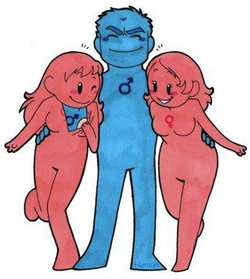
Our sex exerts an incredible influence on our lives, influencing anatomy, appearance, behavior, and countless other traits. Socially, our sex also matters in terms of how we are understood and treated by others, because we see each other through a gendered lens. Female college graduates are hired more often than male graduates, for instance, but earn 17 percent less than their male counterparts. Police pull male drivers over at a much higher rate than they do female drivers. In high school math classes, teachers direct questions toward, call on, and interact with male students much more frequently than females.
We tend to recognize differences between males and females and try to explain them as a function of sex; we classify some things as masculine and others as feminine, often couching these divisions in evolutionary terms. But these justifications are often inaccurate. As we'll see below, many of the sociological differences between males and females have little, if any, universal relationship to sex.
“Sex” vs. “gender”
Most humans make no real distinction between the words “sex” and “gender”—one term often replaces the other. When asking about a friend’s pregnancy, we might ask about either the sex or the gender of the baby with the same intent, and the US Census Bureau even uses the words “sex” and “gender” interchangeably. The general confusion between these terms made headlines recently when a transgender contestant wanted to compete in the Miss Universe Pageant; a kerfuffle ensued when nobody could quite figure out if that should be allowed.
Sex is a scientific concept, referring to the biological and physiological differences between males and females. In humans, males have penises, an X and a Y chromosome, and generally lower voices and higher amounts of body hair. Vaginas, two X chromosomes, and the ability to lactate and to menstruate are sex characteristics usually belonging to females. These traits aren’t universal in males and females of other species, but they are representative of the biological concept of sex.
Confusion over sex and gender norms runs rampant. Scientists tend to assign traditional human gender roles to animals—and even to plants.
Gender, meanwhile, is a sociological construct. Most often, the term “gender” describes how men and women fulfill certain cultural norms defined by their sex. The World Health Organization says that gender “refers to the socially constructed roles, behaviors, activities, and attributes that a given society considers appropriate for men and women.” Gender encompasses everything from preferences to hobbies to roles in the home and the workplace, and the term applies only in a human context; since it is a social concept, gender does not apply to other species.
That's not to say that cultural gender roles have no roots in biology. The tendency for women to take on many of the parental duties, for example, likely stems from mothers’ ability to lactate, providing necessary nourishment for their children. Biologically, men are drawn to a woman’s hourglass figure because it signals health and fertility; many women, in turn, try to alter or enhance their body shape to fulfill this standard of beauty.
However, ties to biology are not necessary for gender roles to develop, and many of these roles have nothing at all to do with sex. For instance, we often associate girls with pink and boys with blue. But it was standard in the US during the early 1900s to dress American boys in pink and girls in blue. With its hint of "powerful" red, pink was considered a “stronger” color, while blue was thought to be “daintier” and more suitable for girls. These preferences changed in the mid-20th century; today, many parents wouldn’t dare dress their sons in pink.
Because gender roles are so pervasive in human culture, we tend to use them to help us understand the rest of the world. Unfortunately, viewing nature through a human lens doesn’t always give us an accurate picture of what is going on. Nature constantly engineers new and creative solutions to all sorts of problems—turning our stereotypes about sex upside-down along the way.
Read the Rest of the Article here
The Images Below:
Humon, the artist behind the webcomic Scandinavia and the World, uses cartoons to explain animal mating habits that fall outside the bounds of "traditional marriage" by anthropomorphizing the players in her trademark adorable style. In her animal gender roles series, she takes a similar approach, portraying various animals as humans so that we can imagine how their family and mating structures might look among our own species.
Read More: http://www.comicsalliance.com/2012/04/14/animal-gender-roles-cartoons-humon/#ixzz28NuPl4cR

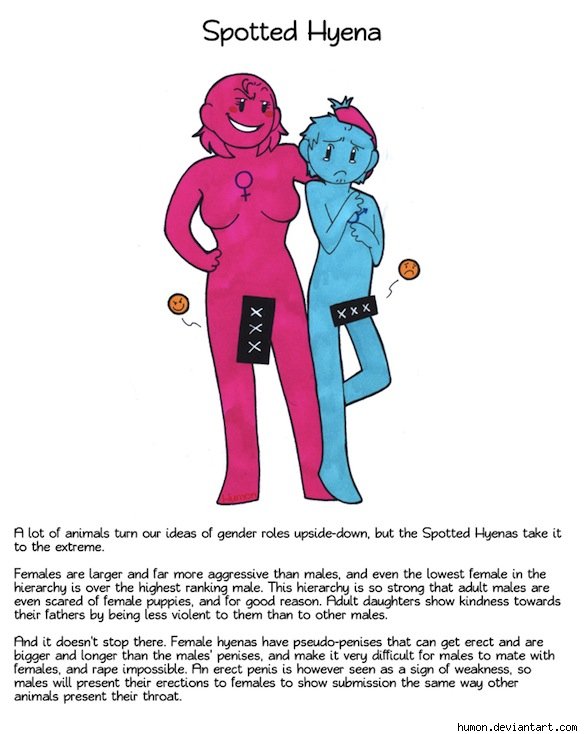

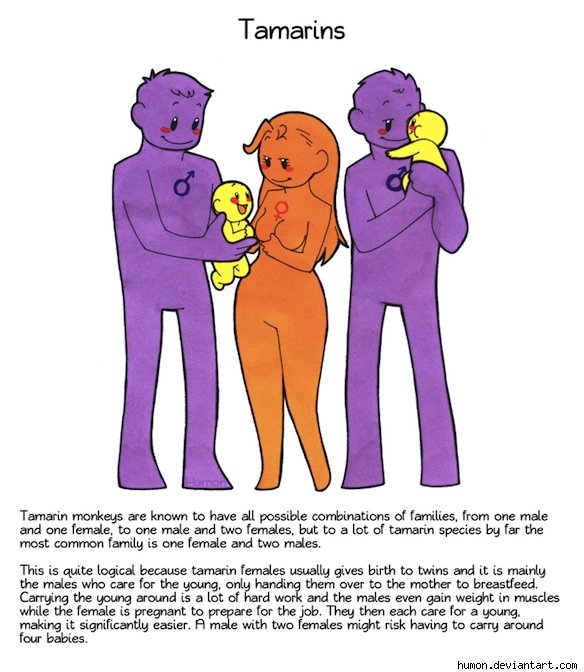
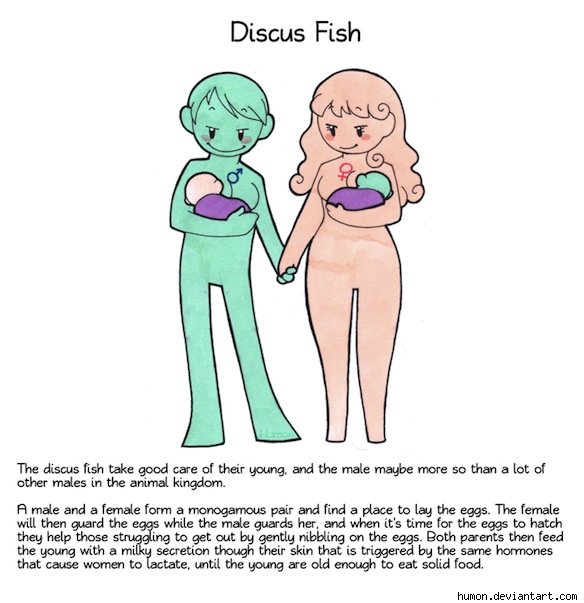
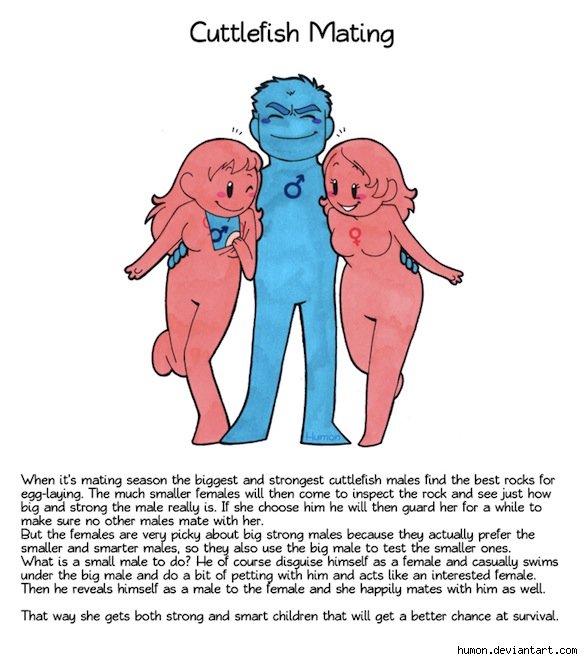
 RSS Feed
RSS Feed
